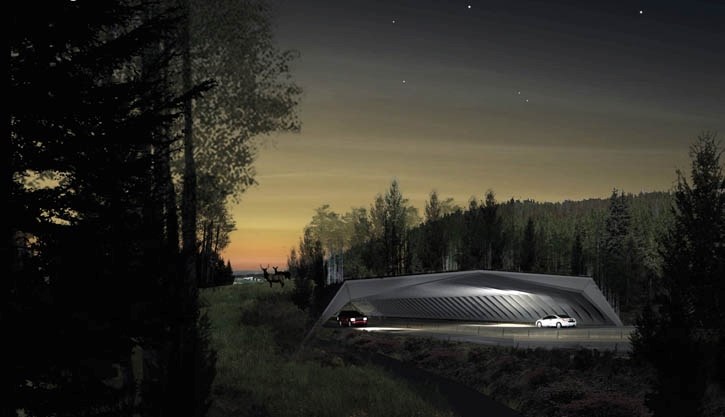A New York City design firm has won the first ARC International Wildlife Crossing Infrastructure Design competition.
HNTB with Michael Van Valkenburgh Associates, Inc. (HNTB+MVVA) won $40,000 for their design that tackled the problem of ensuring humans and wildlife can travel safely in the same spaces through innovative architecture.
The design is intended to cross Interstate 70 in West Vail Pass, located an hour west of Denver, Colorado, as per the direction of the competition’s steering committee.
A jury of five experts unanimously chose the New York firm’s design.
“I think they really met everyone’s expectations,” said Rob Ament, ARC project manager and Road Ecology Program Manager at Montana State University.
The idea behind the competition was to produce innovative designs for functional, cost-effective crossing structures and answer the question of whether overpasses can be built cheaper using recycled and new materials coming onto the market, including plastics and concrete.
The winning design is the most cost-effective, uses modular technology, is easy to construct, provides greater material control, and uses a unique drainage system.
“It was very new ground from an engineering perspective… and it was cost-effective,” said Ament.
Estimates suggest the crossing can be built for roughly half, on a cost per unit basis, of the current cost to build the structures in Banff National Park.
Banff National Park is home to two 50-metre-wide overpasses, located near the Sunshine turnoff and Red Earth Creek, built in 1997 at a cost of $3 million each, and four new overpasses currently under construction on the Trans-Canada Highway are part of the twinning work at a cost of $11 million.
The winning design from HNTB+MVVA has a single span across the highway with no center pier as opposed to the Banff overpasses, which have two single spans with a median in the center. This single span is intended to provide a much safer experience for drivers by creating a more open space. It’s also good from a construction and engineering perspective since the crossing can be built without closing the highway in both directions.
The modular design also allowed for the crossing to be approximately four times wider than the structures in Banff.
“Because it can be so wide, you could have a variety of habitats on the crossing, thus making it of more interest to a whole wide suite of species,” said Ament.
The ARC competition first came about when the steering committee met in October 2008 and its members looked for a site that would fit a series of criteria, including data demonstrating the location is an important wildlife movement area requiring an overpass, the type of species requiring a structure, a transportation agency open to the idea and being near or on federal lands in the U.S. The U.S. Department of Transportation, Federal Highway Administration and the Office of Federal Lands Highway are major funding partners of the project.
The site also had to be on a major highway near a metropolitan centre, which narrowed it down to the site near Denver. Although the Colorado Department of Transportation was heavily involved with the competition, there is no guarantee the winning wildlife crossing design will be used when the new highway is built. But Ament was confident the design will be incorporated into future projects in the area.
Now that the winning design has been chosen, Phase Three of the project is to create an educational and outreach component. ARC is currently raising money to produce a video with interviews from all designers to hear about their challenges in designing the crossings, said Ament.
The designs are also going to be featured in upcoming magazine articles, at conferences, and the steering committee is authoring articles for professional journals. Ament hopes to see museums and other institutions host exhibitions on the competition designs, as well. It’s all part of an effort to give this information not only to practitioners in transportation and ecology, but also to the general public, said Ament.
Parks Canada has also expressed interested in meeting with all five finalists to help in the design of new wildlife crossings over key sections along the Trans-Canada Highway through the Canadian Rockies.




